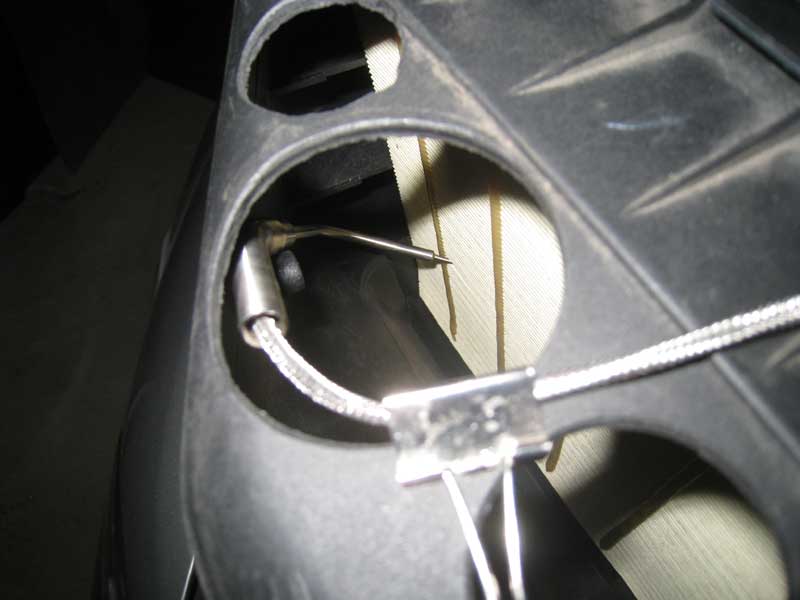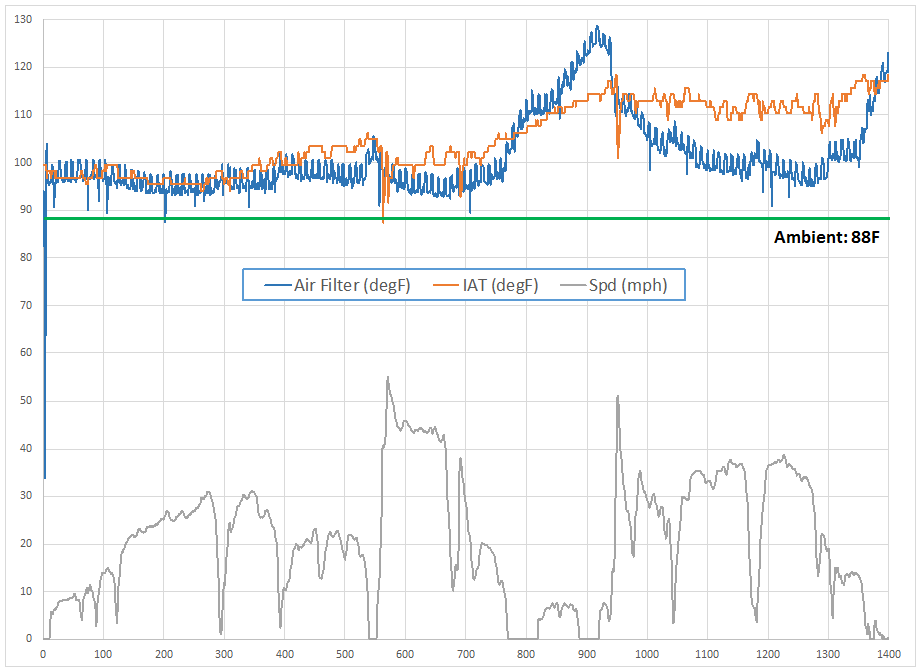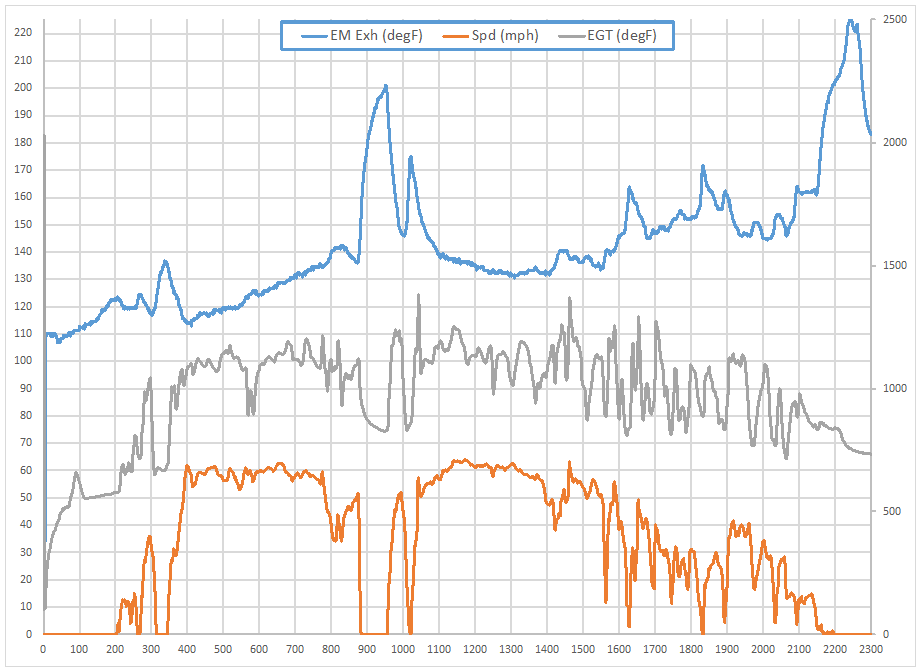Continuing my investigation (first post here) into how the air filter temperature changes under different driving conditions I recorded my morning and afternoon commutes. Note that the temperature readings appear to drop below the ambient temperature, this is likely due to a combination of factors, such as the temperature sensor having some variation, me not monitoring the temperature on the dashboard closely, and driving through cooler pockets of air.
Morning:

and in the early evening/late afternoon:
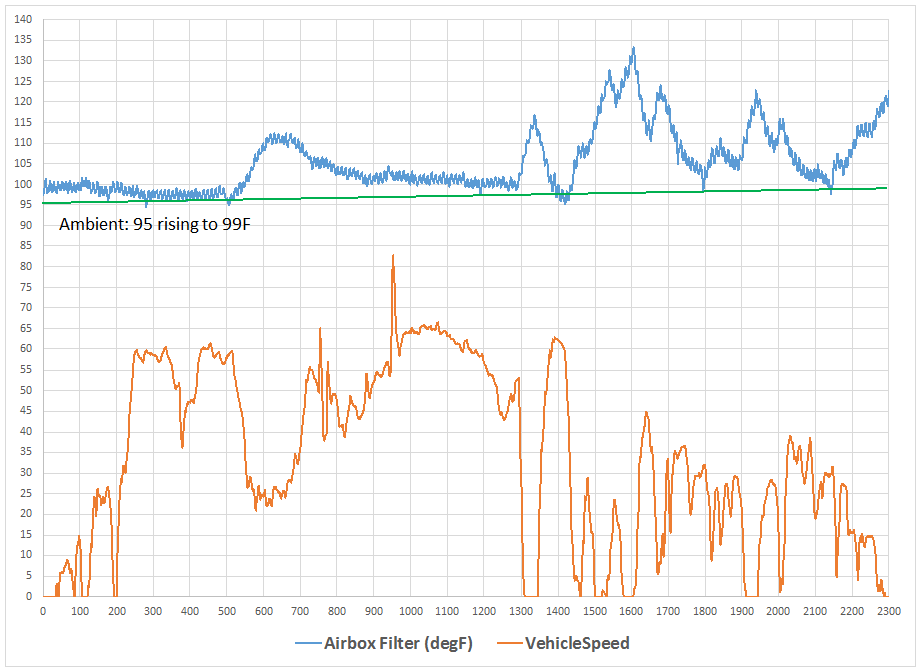
I’m now wondering more about those holes in the airbox:
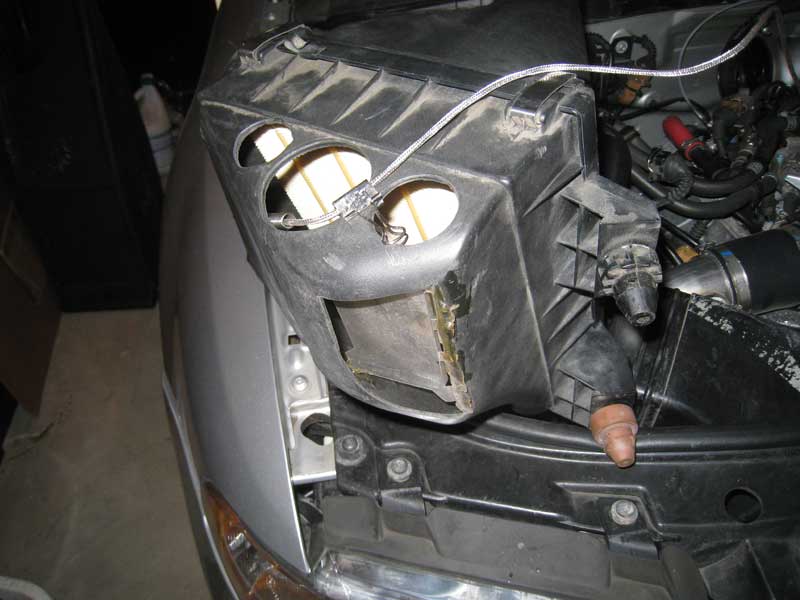
I’m curious now to know if they are letting hot air into the airbox more readily than would a closed airbox. To test this theory out I went and unmodified the bottom half of my airbox, shown below:

The plan is to drive the car tomorrow along a similar route and see how the temperatures compare.
Below is a close up of the temperature sensor probe as it is positioned inside the stock air filter.
